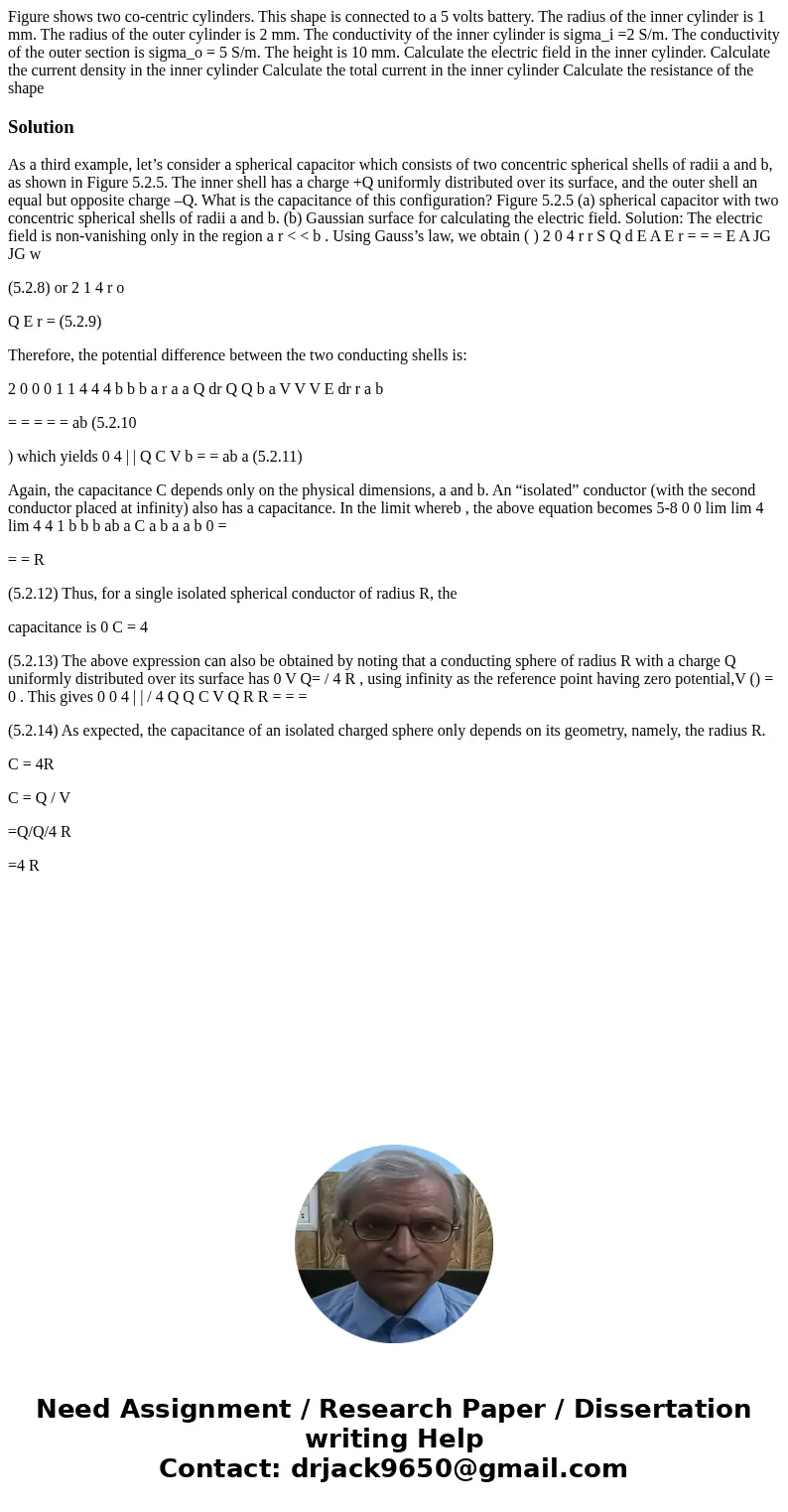Figure shows two cocentric cylinders This shape is connected
Solution
As a third example, let’s consider a spherical capacitor which consists of two concentric spherical shells of radii a and b, as shown in Figure 5.2.5. The inner shell has a charge +Q uniformly distributed over its surface, and the outer shell an equal but opposite charge –Q. What is the capacitance of this configuration? Figure 5.2.5 (a) spherical capacitor with two concentric spherical shells of radii a and b. (b) Gaussian surface for calculating the electric field. Solution: The electric field is non-vanishing only in the region a r < < b . Using Gauss’s law, we obtain ( ) 2 0 4 r r S Q d E A E r = = = E A JG JG w
(5.2.8) or 2 1 4 r o
Q E r = (5.2.9)
Therefore, the potential difference between the two conducting shells is:
2 0 0 0 1 1 4 4 4 b b b a r a a Q dr Q Q b a V V V E dr r a b
= = = = = ab (5.2.10
) which yields 0 4 | | Q C V b = = ab a (5.2.11)
Again, the capacitance C depends only on the physical dimensions, a and b. An “isolated” conductor (with the second conductor placed at infinity) also has a capacitance. In the limit whereb , the above equation becomes 5-8 0 0 lim lim 4 lim 4 4 1 b b b ab a C a b a a b 0 =
= = R
(5.2.12) Thus, for a single isolated spherical conductor of radius R, the
capacitance is 0 C = 4
(5.2.13) The above expression can also be obtained by noting that a conducting sphere of radius R with a charge Q uniformly distributed over its surface has 0 V Q= / 4 R , using infinity as the reference point having zero potential,V () = 0 . This gives 0 0 4 | | / 4 Q Q C V Q R R = = =
(5.2.14) As expected, the capacitance of an isolated charged sphere only depends on its geometry, namely, the radius R.
C = 4R
C = Q / V
=Q/Q/4 R
=4 R

 Homework Sourse
Homework Sourse